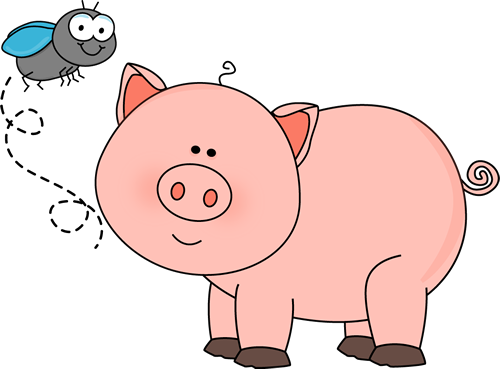SHOO FLY!
When the Flies Show Up, Your Bottom Line Can Take a Serious Hit!
…and so can herd health, animal comfort, productivity and your comfort, too!

Summer is officially here which means it’s time to tackle the serious business of fly control. Flies can be a real challenge for livestock farmers and can cost the dairy and hog industries hundreds of millions of dollars in lost production each year.
Not only are they annoying to both the workers and the animals, flies really do have a significant effect on production efficiencies. Instead of resting and making milk, cows can easily expend their extra energy trying to fend off these pesky nuisances! Flies in the barn can decrease milk production, and increase medication costs, veterinary visits, and the threat of disease spreading… not to mention reduced farm worker productivity and the increased chance of having cranky neighbors.
A fly problem in your barns can wreak havoc on your herd. You’ll find the cows trying to get rid of the flies by shaking, rubbing and switching their tails which can raise both their heart and respiratory rates, and can also increase their body temperature causing heat stress. You might also find them grouping together, which can worsen their heat stress.

And then there’s the bites…
Fly bites can result in major economic losses to pig farmers. Irritation from biting flies can cause skin lesions or allergic reactions causing some pigs to be skinned at the abattoir. A skin from a finisher pig can weigh 17kg and the financial penalty can be as much as $34 per pig, as well as additional downgrades depending on the abattoir.
Back in the dairy barn, the nutrients that would normally go into milk production are diverted to replace blood loss from biting. There is also a risk of transmitting diseases such as mastitis, bacterial scours, and pink eye throughout the herd.
Research has been done on the actual production losses that relate directly to stable flies and it’s estimated that a dairy can lose:
- 306 lbs of milk per cow
- 13 lbs of body weight from preweaned calves
- 57 lbs of body weight from stocker cattle
When you add all of this up you get a grand estimated total of $360 million in lost production across the industry.

All flies pass through four life stages: egg, larva (maggot), pupa, and adult. During its life cycle, which is about 30 days, a house fly female can lay up to 1000 eggs. These eggs are deposited on moist manure or any decaying organic matter. The eggs hatch in 10 to12 hours and the maggots move into the wet manure. Fly maggots mature in 4 to 5 days under warm moist conditions. Pupation occurs in the drier parts of manure, with the adult flies emerging in 3 to 5 days. Under ideal conditions, a fly can complete its life cycle in 9 to 14 days.
So what’s the best way to deal with this pesky problem?
Flies love dirty, moist conditions and their favorite breeding ground is decaying organic matter and manure. It shouldn’t be a surprise to learn that when it comes to fly control, the best remedy is prevention, and the answer lies in a clean barn!
Flies deposit eggs in the top few inches of moist manure which means that minimizing the amount of moist manure surface area available to the fly is an excellent fly reduction strategy. The LWR System creates a dry solid from manure liquids to greatly reduce fly attraction areas.
It also helps keep your dairy clean and dry and gives producers the ability to sell segregated manure fertilizer promptly rather than stockpiling it.
Instead of dealing with the problem after it’s already a problem, you can solve it before it becomes a problem by treating your manure year round. With empty lagoons and clean lanes you also will lower their re-productivity and stop the flies before they start.
A barn with the LWR System is a barn without a manure problem, and a barn without manure problem is a barn without a fly problem!
